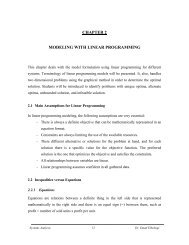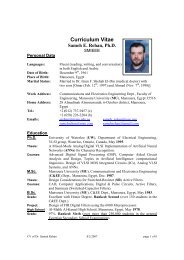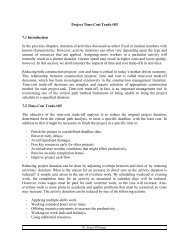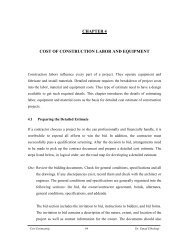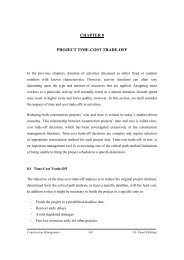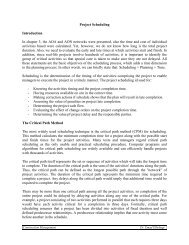Thyroid and Parathyroid
Thyroid and Parathyroid
Thyroid and Parathyroid
Create successful ePaper yourself
Turn your PDF publications into a flip-book with our unique Google optimized e-Paper software.
DNA Ploidy<br />
Measurement of DNA ploidy is of some use in prognosis because aneuploidy is noted<br />
in 10 percent of all papillary carcinomas but is present in 25 to 50 percent of patients<br />
who die from thyroid cancers. Aneuploid DNA measurements are encountered<br />
. infrequently in papillary thyroid cancers among survivors<br />
The most significant single prognostic indicator overall is distant metastases,<br />
especially to bone. Local invasion of the primary tumor through the thyroid capsule<br />
into the adjacent structures increases the mortality tenfold over matched patients with<br />
. intrathyroidal tumors<br />
The other frequently used classification systems are AMES (Age, Metastases, Extent,<br />
Size) <strong>and</strong> TNM (Tumor size, Nodal involvement, <strong>and</strong> Metastases to distant sites).<br />
Patients less than 45 years of age without distant metastases usually are considered to<br />
. be at low risk<br />
Surgical Treatment<br />
When patients are found to have a minimal papillary thyroid carcinoma in a thyroid<br />
specimen removed for other reasons, unilateral thyroid lobectomy <strong>and</strong> isthmectomy<br />
usually is sufficient surgical treatment unless there is angioinvasion or the tumor is at<br />
the margins of resection. Similarly, in rare cases of encapsulated papillary thyroid<br />
carcinoma, total lobectomy is all that is needed. In all other patients with papillary<br />
. thyroid cancer, total or near- total thyroidectomy is the procedure of choice<br />
The Case for Total <strong>Thyroid</strong>ectomy<br />
There are several arguments for the treatment of papillary carcinoma by total<br />
thyroidectomy: multifocal disease, decreased incidence of local recurrence, reduced<br />
risk of anaplasia in any residual tissue, facilitation of diagnosing unsuspected<br />
metastatic disease by radioiodine scanning or treatment with 131I (reducing incidence<br />
of distant recurrence), <strong>and</strong> greater sensitivity of blood thyroglobulin levels to predict<br />
. recurrent or persistent disease<br />
Multifocal disease in papillary carcinoma is well documented (up to 85 percent).<br />
Unilateral lobectomy therefore may leave residual disease in the contralateral lobe.<br />
Recurrence rates in the contralateral lobe after thyroid lobectomy range from 4.2 to 26<br />
percent. In one study, the recurrence rate was 19 percent at 10 years after lobectomy<br />
. versus 11 percent in similar patients treated with total thyroidectomy<br />
Whether total thyroidectomy has any survival advantage over near-total<br />
thyroidectomy (total lobectomy with subtotal resection of the contralateral lobe) is<br />
unclear. Studies from the Mayo Clinic demonstrated that in low- <strong>and</strong> high-risk AGES<br />
categories local recurrence was higher after lobectomy than after total or near-total<br />
resection. Total thyroidectomy did not have better survival rates than near total<br />
thyroidectomy. It is suggested that subtotal resection on the side opposite the tumor<br />
decreases the chances of damage to the parathyroid <strong>and</strong> the recurrent laryngeal nerve.<br />
This argument is valid in the case of patients whose parathyroid gl<strong>and</strong>s are anteriorly<br />
located on the thyroid, so that some thyroid tissue is left to preserve the blood supply<br />
to the parathyroid gl<strong>and</strong>s. When the parathyroid gl<strong>and</strong>s are situated off the thyroid<br />
gl<strong>and</strong>, there is little benefit in leaving thyroid tissue. In experienced h<strong>and</strong>s the<br />
incidence of permanent hypoparathyroidism or nerve damage after total



